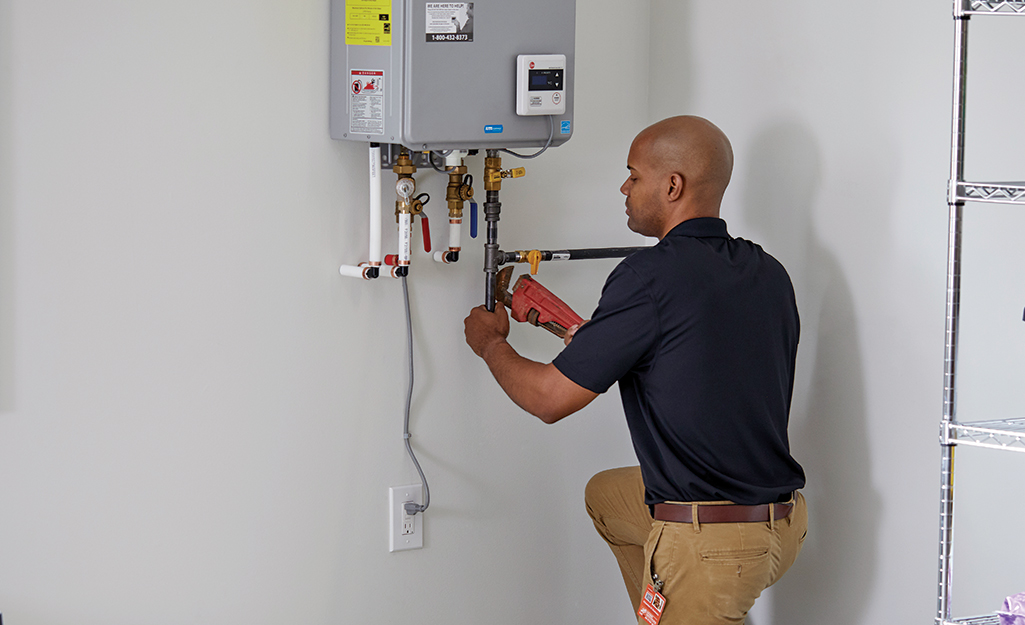Important Guidance on Maintaining Your Home's Hot Water SystemSteps to Successfully Care for Your Home's Hot Water System
Important Guidance on Maintaining Your Home's Hot Water SystemSteps to Successfully Care for Your Home's Hot Water System
Blog Article
What are your opinions concerning How to Maintain a Hot Water Heater in a Few Simple Steps?

Warm water is crucial for day-to-day comfort, whether it's for a rejuvenating shower or cleaning meals. To ensure your hot water system runs successfully and lasts longer, normal maintenance is key. This write-up offers sensible ideas and insights on exactly how to maintain your home's hot water system to stay clear of interruptions and pricey repair services.
Introduction
Keeping your home's warm water system might appear complicated, however with a few easy actions, you can ensure it operates efficiently for several years ahead. This guide covers everything from comprehending your warm water system to DIY maintenance ideas and understanding when to call in expert aid.
Value of Maintaining Your Warm Water System
Regular upkeep not only expands the lifespan of your warm water system but additionally ensures it runs efficiently. Disregarding maintenance can cause lowered efficiency, greater energy expenses, and also early failing of the system.
Signs Your Hot Water System Needs Maintenance
Recognizing when your warm water system needs interest can stop significant issues. Watch out for indications such as irregular water temperature level, strange noises from the heating unit, or rusty water.
Comprehending Your Warm Water System
Before diving into maintenance jobs, it's handy to understand the standard components of your hot water system. Usually, this consists of the water heater itself, pipelines, anode poles, and temperature level controls.
Monthly Maintenance Tasks
Regular month-to-month checks can assist capture small concerns prior to they escalate.
Flushing the Water Heater
Flushing your water heater eliminates sediment accumulation, enhancing performance and lengthening its life.
Monitoring and Changing Anode Rods
Anode poles protect against rust inside the tank. Inspecting and changing them when broken is crucial.
Inspecting and Adjusting Temperature Level Settings
Changing the temperature settings guarantees ideal performance and safety.
DIY Tips for Upkeep
You can perform numerous upkeep jobs on your own to maintain your hot water system in top condition.
Checking for Leaks
Regularly evaluate pipelines and links for leaks, as these can result in water damage and higher expenses.
Testing Stress Relief Valves
Checking the pressure safety valve ensures it works appropriately and avoids too much pressure build-up.
Insulating Pipelines
Insulating warm water pipelines lowers warm loss and can save power.
When to Call a Professional
While do it yourself upkeep is useful, some concerns call for specialist proficiency.
Complicated Concerns Requiring Expert Aid
Examples consist of significant leaks, electrical problems, or if your water heater is continually underperforming.
Routine Expert Upkeep Benefits
Expert upkeep can consist of extensive examinations, tune-ups, and making sure compliance with safety and security requirements.
Conclusion
Normal maintenance of your home's warm water system is important for performance, long life, and cost financial savings. By complying with these suggestions and knowing when to look for expert assistance, you can ensure a reliable supply of hot water without unanticipated disturbances.
How to Maintain an Instant Hot Water Heater
Before tinkering with your hot water heater, make sure that it’s not powered on. You also have to turn off the main circuit breaker and shut off the main gas line to prevent accidents. Also turn off the water valves connected to your unit to prevent water from flowing into and out of the appliance. 2. When you’re done, you have to detach the purge valves’ caps. These look like the letter “T” and are situated on either side of the water valves. Doing so will release any pressure that has accumulated inside the valves while at the same time avoid hot water from shooting out and burning your skin. 3. When the purge valves’ caps are removed, you have to connect your hosing lines to the valves. Your unit should have come with three hoses but if it didn’t, you can purchase these things from any hardware or home repair shops. You can also get them from retail stores that sell water heating systems. Read the user’s manual and follow it to complete this task properly. When the hosing lines are connected, open the purge port’s valves. 4. You should never use harsh chemical cleaners or solutions when cleaning your unit. Make use of white vinegar instead. It should be undiluted and you’ll probably use about 2 gallons. 5. Now flush your water heater. This task should probably take about 40 minutes. We can’t give you specific directions for this because the procedure is carried out depending on the type, model and brand of your heater. With that being said, refer to the user’s manual. 6. When you’re done draining the unit, you have to turn off the purge port valves again. Remove the hosing lines that you earlier installed on each of the water valves. Put the valve caps (purge port) back in their respective places and be very careful so as not to damage the rubber discs that are found inside these caps. 7. Now that everything’s back in place, check your user’s manual again to find out how to reactivate your water heating system. 8. Once it is working, turn one of your hot water faucets on just to let air pass through the heater’s water supply pipes. Leave the tap on until water flows smoothly out of it. https://www.orrplumbing.com/blog/2014/september/how-to-maintain-an-instant-hot-water-heater/

As a serious reader on Tips For Maintaining Your Hot Water Heater, I thought sharing that section was smart. If you please take the opportunity to promote this blog post if you enjoyed it. Many thanks for going through it.
Schedule Appointment Now Report this page